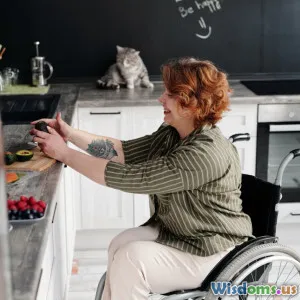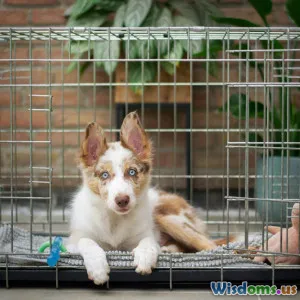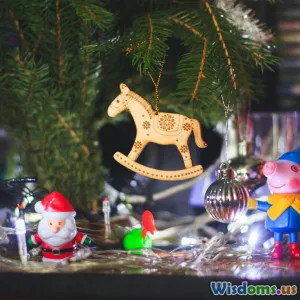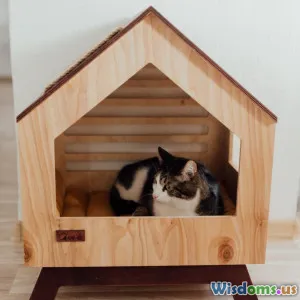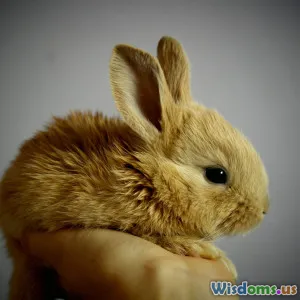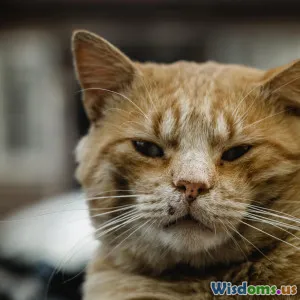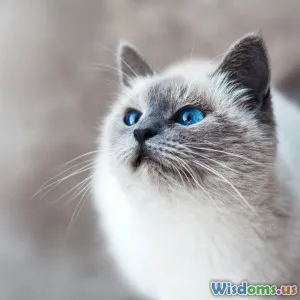
My Senior Cat Stopped Grooming What Helped Her Recover
6 min read Discover effective steps to help your senior cat regain grooming habits and improve their wellbeing after grooming decline. (0 Reviews)
My Senior Cat Stopped Grooming: What Helped Her Recover
Cats are meticulous self-groomers, dedicating up to 50% of their waking hours to cleaning their fur and maintaining hygiene. So, when a senior cat suddenly stops grooming, it’s a red flag that something significant is wrong. This was the unsettling scenario I faced with my elderly feline companion. Witnessing her fur become matted and unkempt was heartbreaking and prompted me to dig deeply into the causes and solutions.
In this article, I’ll share the comprehensive approach that helped my senior cat recover her grooming habits, supported by veterinary insights, scientific data, and real-world practices.
The Importance of Grooming in Cats
Grooming is more than just keeping a cat’s fur tidy. It helps regulate body temperature, stimulates circulation, removes dirt and parasites, and even reduces stress through repetitive action. For senior cats, grooming becomes a key indicator of their wellbeing. Any disruption can point to underlying health or emotional conditions.
According to a 2016 study published in "Veterinary Dermatology," decreased grooming in older cats correlates strongly with medical problems such as dental disease, arthritis, and chronic pain.
Recognizing That Your Senior Cat Has Stopped Grooming
Before jumping to conclusions, it’s critical to observe your senior cat carefully for signs of grooming neglect:
- Matted or unkempt fur, clumps of hair, or excessive shedding
- Foul odors or greasy coat texture
- Presence of fleas or ticks due to lack of grooming
- Excessive dandruff or skin inflammation
If these signs persist beyond a few days, professional evaluation is necessary.
Common Causes Why Senior Cats Stop Grooming
1. Physical Pain and Mobility Issues
Arthritis or joint stiffness can make bending and stretching to groom difficult. A 2018 survey by the Cornell Feline Health Center found that over 60% of senior cats show signs of arthritis by age 10.
2. Dental Problems
Pain from periodontal disease or broken teeth reduces a cat’s will to lick and groom. Unfortunately, oral health is often overlooked in older cats.
3. Chronic Illness
Conditions such as kidney disease, hyperthyroidism, or diabetes can sap energy, causing lethargy and decreased grooming.
4. Stress or Depression
Senior cats experiencing changes like new pets, humans, or environment disruptions may react by grooming less.
What Helped My Senior Cat Recover Her Grooming Routine
Faced with these challenges, I partnered with my veterinarian and tried several interventions that ultimately combined to help my cat get back on track.
Veterinary Diagnosis and Treatment
First step: a thorough vet examination including blood work, oral inspection, and joint assessment. My cat was diagnosed with mild arthritis and dental disease.
She received anti-inflammatory medication and dental cleaning, which significantly reduced her pain.
Encouraging Grooming With Assisted Maintenance
Instead of waiting for self-grooming to resume, I incorporated daily brushing sessions. This removed mats, stimulated her skin, and also reinforced bonding — critical emotional support that eased anxiety.
Environmental Enrichment and Stress Reduction
I ensured consistent routines, added elevated resting spots for comfort, and diffused feline pheromone sprays that reduce stress.
Proper Nutrition and Supplements
A diet rich in omega-3 fatty acids helped improve skin and coat health. Additionally, joint supplements like glucosamine boosted mobility.
Regular Monitoring and Patience
Rewarding even small grooming behaviors reinforced the habit over weeks.
Expert Opinions
Dr. Karen Becker, a renowned holistic veterinarian, emphasizes, “When a senior cat stops grooming, it’s often a combination of physical discomfort and emotional stress. Addressing both facets holistically yields the highest chance of recovery.”
Final Thoughts
Watching your senior cat stop grooming can be distressing, but it is an important indicator enabling early intervention. Paying close attention to signs and working collaboratively with veterinary professionals, providing compassionate care, and enhancing your cat’s environment can restore their grooming habits.
Your feline friend’s quality of life depends on staying proactive and patient. With time, supportive care, and love, your senior cat can regain her dignity and health, one grooming session at a time.
If your senior cat faces grooming challenges, do not delay veterinary consultation. Proper diagnosis and care can transform their twilight years into a period of comfort and contentment.
Rate the Post
User Reviews
Other posts in Health & Wellness
Popular Posts










